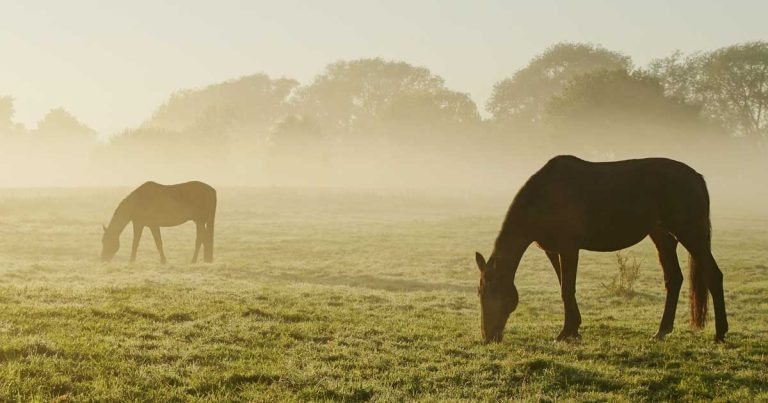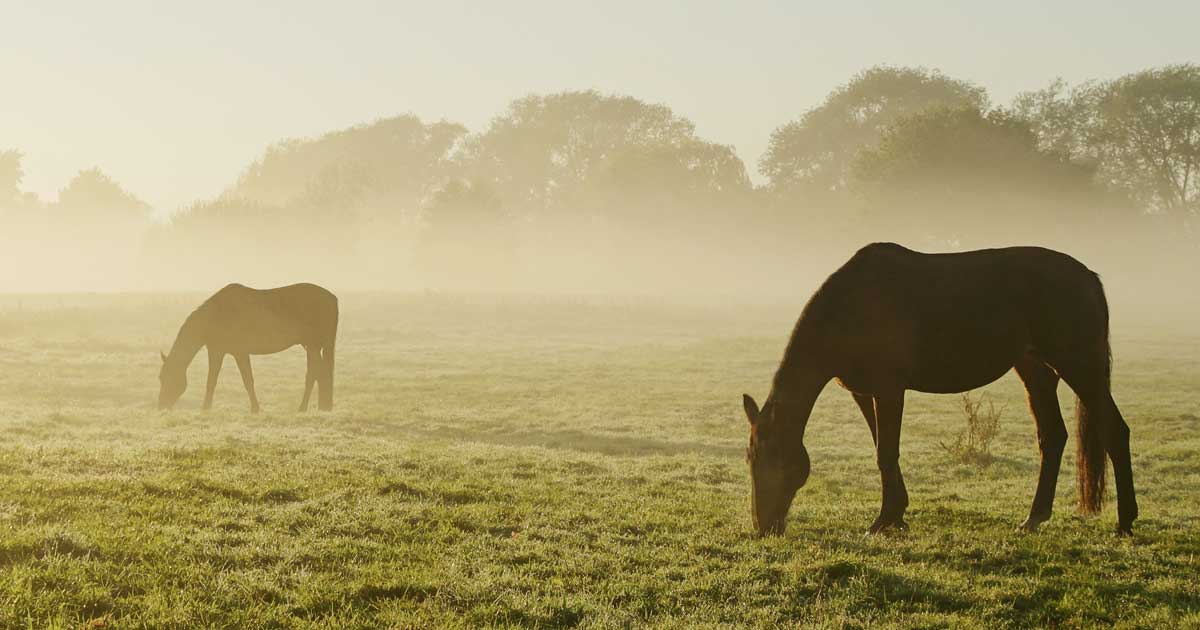13 Mar 2023
Laura Quiney provides an overview on some of the latest developments in the methods of diagnosis for this condition in horses.

Image: © Dirk70 / Adobe Stock
Lameness investigations can be challenging – particularly for recently graduated or inexperienced veterinarians. Abundant research can be found within this field. However, it can be difficult for veterinarians to keep up to date with publications, critically assess the information, and determine whether and how to apply it to clinical practice.
This article provides an overview of some important recent advances in gait assessment, diagnostic anaesthesia and diagnostic imaging.
Accurate diagnosis of lameness requires a logical and judicious approach at each stage of the examination.
The complexity of investigation can be highly variable and ranges from relatively simple cases, such as acute onset lameness accompanied by localising clinical signs to poor performance or multi-limb lameness.
With the appropriate application of knowledge and techniques, and the availability of portable diagnostic equipment, high-quality examinations can be achieved in ambulatory settings.
However, instances exist where referral to a specialist clinic may be more cost and time effective, or should be considered to ensure the best outcome for the horse, owner and veterinarian. These include:
The approach to reaching a diagnosis for lameness or poor performance can be simplified into five logical steps, which apply to the majority of cases:
“Diagnosis” implies certainty and infallibility of the diagnostic process. Lameness evaluation has been described countless times as both an art and a science. Limitations exist to every stage of lameness investigation; therefore, both approaches must be used.
William Osler (1849-1919) once described medicine as “a science of uncertainty and an art of probability”. The author believes that it is also a very fitting description of how lameness should be approached by equine veterinarians. Nevertheless, abundant research has been undertaken related to lameness investigation, which drives us towards a more certain science and a more defined art.
Recent advances that can be directly applied to lameness investigation in first opinion practice have been made in three key areas: gait assessment, diagnostic anaesthesia and diagnostic imaging.
A plethora of gait abnormalities, movement adaptations and behaviours (collectively, the clinical signs of lameness and poor performance) exist that may indicate the presence of pain. Gait assessment is subjective and it is well recognised that poor agreement often exists among veterinarians, including highly experienced clinicians and specialists (Hardeman et al, 2022).
Lameness is considerably under-recognised by the UK horse-riding population (Greve and Dyson, 2014), and experience suggests it can be under-recognised by veterinarians, too. It can be difficult for inexperienced veterinarians to differentiate pain-related behaviours from naughty horses, or behaviours that are purportedly normal for an individual horse.
The Ridden Horse Pain Ethogram (RHpE) has been developed to facilitate the identification of the presence of pain as a cause of lameness or poor performance (Dyson et al, 2018a; Dyson et al, 2018b; Dyson et al, 2020; Dyson, 2020). Data has been documented for its application in approximately 1,500 horses to date (Berger et al, 2022).
The ethogram is a tool consisting of 24 potentially pain-related behaviours, which are documented over a 5 to 10-minute period of ridden exercise. A score of 8 out of 24 or higher indicates a high likelihood of the presence of lameness (Dyson and Van Dijk, 2020).
Following diagnostic anaesthesia, a significantly lower RHpE score indicates abolition or substantial alleviation of pain (Dyson et al, 2018b; Dyson and Van Dijk, 2020).
This is a simple field tool, which, with some training, demystifies the sometimes intangible art of gait assessment (Equitopia, 2019). Moreover, encouraging the horse-owning public to use this tool to identify musculoskeletal pain should result in earlier presentation for investigation, and consequently, improved prognosis and outcomes to treatment.
Plentiful research activity exists surrounding objective gait analysis and, in recent years, this technology has become increasingly used in clinical practice.
Objective gait analysis is more sensitive for movement asymmetry than the human eye, and reduces observer and expectation bias (Hardeman et al, 2022). However, this technology is probably still in its infancy, and the objective evaluation of a limited number of the potential gait abnormalities that may indicate pain causing lameness, or poor performance, (namely, poll displacement and pelvic movement asymmetry) is a major limitation.
Not all horses with pain causing lameness display movement asymmetry; for example, the horse with bilaterally symmetrical pain causing lameness in both forelimbs or hindlimbs. Furthermore, data exists primarily for evaluation of horses in hand and on the lunge (Hammarberg et al, 2016; Hardeman et al, 2022).
Lameness or poor performance is sometimes only apparent in the ridden horse. A recent study demonstrated that despite poor agreement of lameness grade among veterinarians, correlation existed between subjective and quantitative assessments (Hardeman et al, 2022).
Objective gait analysis could be used as an adjunctive technique to subjective gait assessment, and to reduce expectation bias following diagnostic anaesthesia, but cannot be used as the primary means of gait assessment. This technology is not immune to user error; incorrect sensor placement can produce misleading results (Serra Bragança et al, 2018; Pfau and Weller, 2017).
While objective gait analysis is an important research tool, it is prudent to maintain greater reliance on subjective analysis in clinical practice.

The specificity of diagnostic anaesthesia techniques relies on accuracy of needle placement and direction, and the volume of local anaesthetic solution injected (Nagy and Malton, 2015; Nagy et al, 2012; Nagy et al, 2010; Pilsworth and Dyson, 2015).
Proximal diffusion, communication between adjacent synovial spaces and desensitisation of structures adjacent to synovial spaces reduce the specificity of diagnostic anaesthetic techniques (Gough et al, 2002; Harper et al, 2007).
Two recent studies have further demonstrated the limited specificity of these diagnostic techniques. Desensitisation of the medial and lateral heel bulbs occurred in six out of eight horses within 30 to 60 minutes following intrathecal anaesthesia of the carpal sheath (Miagkoff and Bonilla, 2021). Half were still fully desensitised at 180 minutes.
Re-evaluation following carpal sheath anaesthesia should, therefore, be performed within 15 minutes and, if required, diagnostic anaesthesia distal to the carpus should be delayed until at least three hours later, or performed on a separate occasion.
Similarly, intra-articular anaesthesia of the stifle (the medial and lateral femorotibial joints and femoropatellar joint) improved or abolished induced foot lameness (Radtke et al, 2020). Up to 50% improvement (confirmed by objective gait analysis) within 30 minutes was reported in three out of nine horses. It is proposed that while abolition of – or a greater than 50% improvement in – lameness within 30 minutes is likely to indicate stifle region pain, less than 50% improvement within 30 minutes or substantial improvement after 30 minutes may not reflect pain localised to the stifle region.
Diagnostic anaesthesia of the distal aspect of the limb should, therefore, be performed on a separate occasion to rule in or out distal limb pain.
Accuracy of needle placement may be improved by employing an ultrasound-guided approach to needle placement (Bellitto et al, 2022a). In this study, 24 horses that required tibial perineural anaesthesia for lameness investigation were randomly assigned to an ultrasound-guided injection or blind injection group. Successful anaesthesia of the tibial nerve was determined by loss of skin sensation in the heel bulbs and the plantaromedial aspect of the proximal metatarsus (Bellitto et al, 2022b).
All horses in the ultrasound-guided group (13 out of 13) had a loss of skin sensation following tibial perineural anaesthesia, compared with 1 out of 11 horses in the blind injection group (Bellitto et al, 2022a). The authors recommend that ultrasound-guided tibial perineural anaesthesia is performed preferentially to the blind technique.
Portable diagnostic imaging equipment can produce images of excellent quality in ambulatory settings. Advanced imaging modalities may be required to reach a diagnosis; for example, when the findings of conventional imaging (radiography and ultrasonography) do not fully explain the clinical picture, or when high-quality images cannot be obtained for the region of interest (for example, for ultrasonography of the foot, or of the distal limb of horses with thick skin).
Comparison between advanced and conventional imaging modalities, and the assessment of additional projections or techniques, has increased our understanding of radiological and ultrasonographic findings. The ever-increasing availability of advanced imaging modalities has not superseded conventional imaging modalities, but cemented their place in lameness investigation. One recent study compared ultrasonography and low-field MRI for the identification of lesions of the oblique (OSL) and straight sesamoidean ligaments (SSL; Hawkins et al, 2022). Ultrasonographic abnormalities were identified in 35 out of 42 cases (83% combined; 94% for SSL and 77% for OSL). Ultrasonography was limited by the presence of thick skin and resulting poor-quality images in 4 out of 42 cases, and in 3 out of 24 cases, no ultrasonographic abnormalities were detected.
The results of this study are in contrast to two previous studies, which reported an ultrasonographic detection rate of only 7% and 20% (Sampson et al, 2007 and Smith et al, 2008, respectively).
The discrepancy may reflect a difference in referral population or ultrasonographic technique. Although Doppler ultrasonography was performed in the recent study by Hawkins et al (2022), in contrast to the studies by Sampson et al (2007) and Smith et al (2008), the role this additional technique played in the diagnosis of desmitis of the OSLs or SSL is not clear. Ultrasonographic evaluation is a valuable tool for soft-tissue assessment, but does rely on the acquisition of high-quality images, in planes that are optimised to the structure of interest.
The diagnostic accuracy of radiography for the identification of synovial involvement in 216 horses with traumatic limb injuries was recently retrospectively assessed using synovial fluid cytology as the gold standard for comparison (Michotte et al, 2022).
A moderate sensitivity (61%) and high specificity (81%) indicate that radiography should be interpreted with caution. The high likelihood of a false-negative result makes it an unacceptable diagnostic tool for determining the likelihood of synovial involvement in trauma cases.